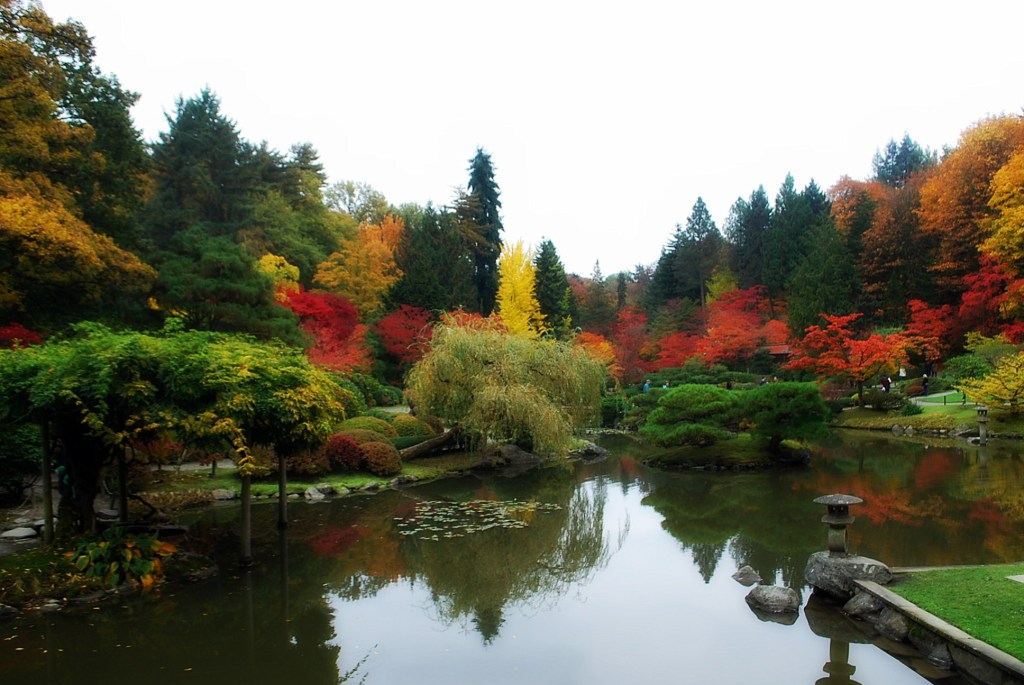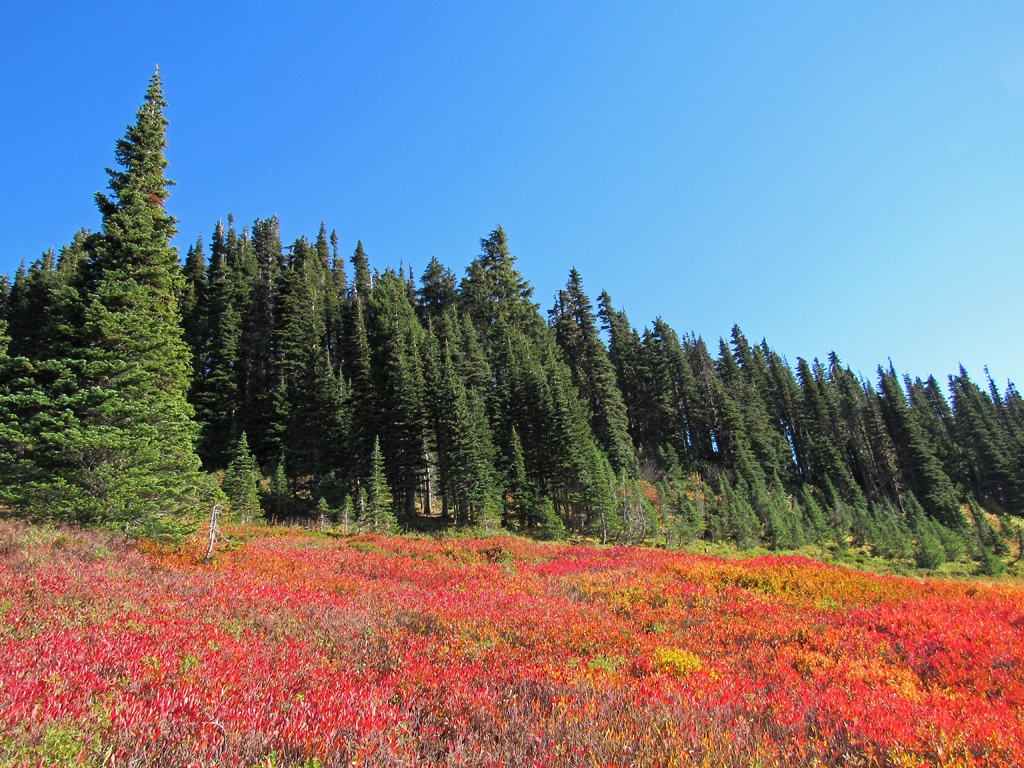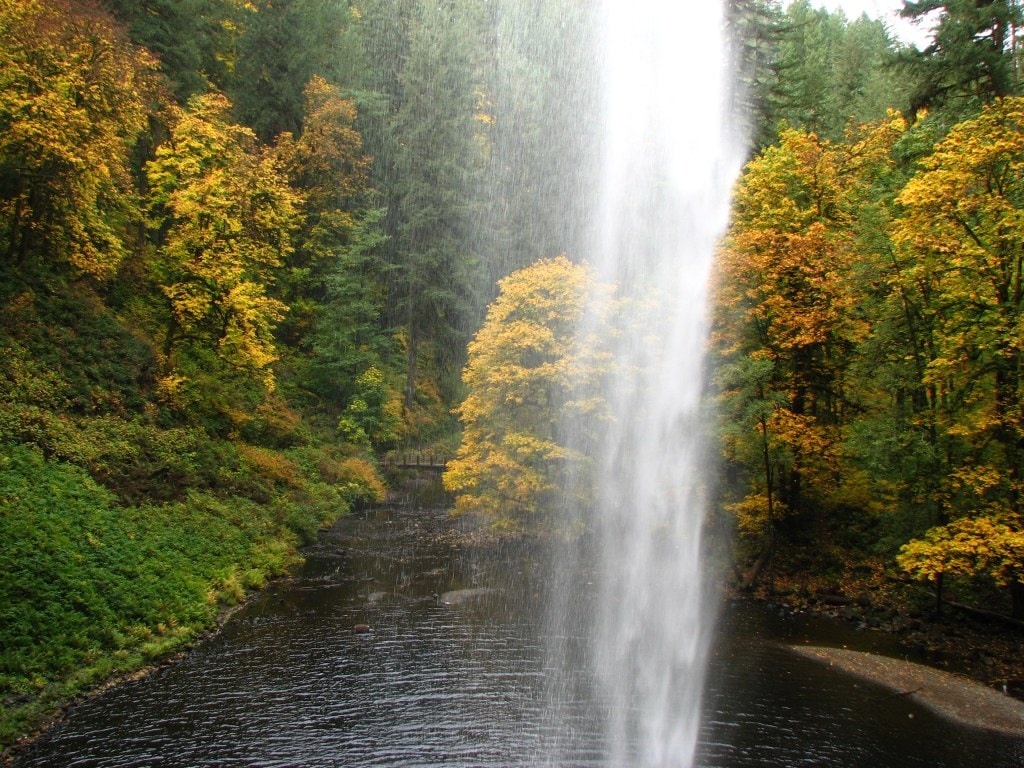A hiker’s paradise of reds, oranges and yellows
Dozens of trails throughout Washington and Oregon hit peak leaf between now and November, their dirt paths covered in leaves and their canopies painted vivid colors that announce autumn’s arrival. Whether you’re jonesing for one last glimpse of Mount Rainier this fall or want to check out foliage in the shadow of nearly a dozen waterfalls in the Cascade foothills, here’s where to go for some of the region’s best leaf peeping.
Washington Park Arboretum (Seattle, Washington)
Why We Love It: Nestled against Lake Washington, the Washington Park Arboretum won’t make you work for stunning fall foliage.
Best Time to Go: Mid-October
What to Know: For all its tech-fueled growth in recent years, Seattle still boasts a remarkable array of natural wonder within city limits.
Case in point? The Washington Park Arboretum, just east of the Montlake Cut, hosts 230 acres of plants, trees and shrubs—some of which are found nowhere else in the Pacific Northwest.
The changing seasons create a myriad Instagram-worthy sights all year long, and that’s never truer than in autumn. The arboretum’s Woodland Garden boasts one of North America’s largest collection of Japanese maples, with leaves turning electric shades of pink, maroon, orange and red. Elsewhere, witch hazel, black gum trees, sorrel trees, buckeyes, strawberry trees and mountain ash put on a show every fall.

Washington Park Arboretum | Photo: Joe Wolfe, Flickr
Skyline Trail (Mount Rainier National Park, Washington)
Why We Love It: Promising unfettered views of Mount Rainier, this is one of the state’s most popular wildflower hikes each spring—but its autumn displays aren’t to be missed.
Best Time to Go: Mid-October
What to Know: The real show along the Skyline Trail isn’t in the trees, but at your feet. Whole fields of bushes and shrubs turn orange and red each fall, offering a colorful contrast to the snow-capped Mount Rainier (which remains visible for long stretches of the hike). Most of the fall colors are found near the stone steps marking the trailhead, but bursts of colorful fields appear throughout the 5.3-mile hike.
Heads up: With winter on the near horizon, check park conditions before heading out. Unpredictable weather and sudden snowstorms can cover the plant life and make for a short day on the trail.

Skyline Trail | Photo: Jeff Hollett, Flickr
Salmon River (Mt. Hood National Forest, Oregon)
Why We Love It: When you imagine Pacific Northwest forests—rushing teal rivers, 100-foot fir trees, thickets of moss and ferns—you’re probably thinking of this area.
Best Time to Go: Mid- to late-October
What to Know: The popular Salmon River Trail hugs the appropriately-named Salmon River for most of the 14-mile trek, with occasional forays up to rocky headlands for views of the surrounding scenery. (Note: If you’re not up for a longer hike, choose a trailhead farther upstream to cut down on the distance.)
The trail’s low elevation means that it’s mostly accessible year-round, but we’re partial to October hikes for fall colors. All manner of trees and shrubs crowd the river’s laconic banks, reflecting vibrant shades of yellow and orange in its blue-green waters. The trail leaves the river after about three miles, but you’ll arrive at a wide-open viewpoint that delivers vistas of the surrounding forest in all of its seasonal splendor.
Heads up: October isn’t only ideal for fall colors along the Salmon River—it’s peak season for spawning salmon, so look for schools of newborn fish milling about.
Silver Falls State Park (Willamette Valley, Oregon)
Why We Love It: The park’s Trail of Ten Falls is breathtaking all year long, but colorful trees line the canyon every autumn.
Best Time to Go: Mid- to late-October
What to Know: Everyone who’s hiked the 8-mile Trail of Ten Falls at Silver Falls State Park has a favorite season. Winter hikes bypass the summertime throngs, spring brings winter runoff and roaring falls, and summer promises a cool respite from scalding temperatures elsewhere in the Willamette Valley.
Every fall, however, the trail is lined with hundreds of colorful trees. Red alder and vine maple are some of the most common kinds you’ll see, and the dirt trail disappears under beds of colorful leaves near the 177-foot South Falls.
That said, the entirety of the Trail of Ten Falls is well worth a day. You’ll encounter, you guessed it, 10 waterfalls in all, the tallest of which is 178 feet high.

South Falls | Photo: David Berry, Flickr
Hoyt Arboretum (Portland, Oregon)
Why We Love It: Accessible by mass transit just minutes from downtown Portland, Hoyt Arboretum offers groves of colorful maple trees every autumn.
Best Time to Go: Late October
What to Know: There’s no bad time of year to visit Hoyt Arboretum, but the park’s trees light up with color every fall. With a 12-mile network of trails covering 189 resplendent acres in Washington Park, it can be tough to know where to begin. (After all, the park hosts more than 2,000 species of tree—and 6,000 trees in total.)
We’d suggest checking out stretches of the Wildwood Trail for some of the park’s many highlights: The 30-mile trail, at various points, has sourwood trees, which turn maroon every autumn, as well as the Franklin Tree, a 250-year-old tree named for Ben Franklin. (Check out the Hoyt Arboretum’s website for specific directions.)
A bonus highlight, though short at less than 1 mile long, is the Maple Trail, on which you’ll spot clusters of vine, red and sugar maple trees, whose leaves take on high-def hues.
